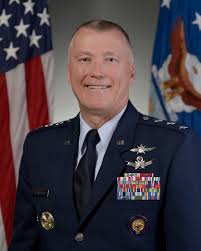- Tom Ridge: Cyber attacks are now worse than physical attacks (Yahoo! Finance): According to this article by Daniel Roberts, the first secretary of the Department of Homeland Security, Tom Ridge, was quoted as saying the following at the Concordia Summit in NY:
Notwithstanding the pain and horror associated with a physical attack … the potential for physical, human, and psychic impact with a cyber attack, I think, is far more serious
Roberts indicates that Ridge’s comments were echoed to some degree by General Keith Alexander, (the first director of USCYBERCOM), who stated that “Nations are using cyber as an element of national power,” according to the article.
Roberts’ article goes on to say that Ridge stated that we now live in the “digital forvermore” and a cyber attack would represent a significant blow to our psyche. This article also posits that one of the take-aways from this Summit was that Silicon Valley and Washington need to work together to help counter some of the threats we face in the realm of cyber. The full text of the article is here.
- Cyberwarfare: What are we doing today? (U.S.A.F.): According to this Air Force public affairs piece, Lt. Gen. J. Kevin McLaughlin, Deputy Command of USCYBERCOM, indicates that the Air Force has moved from air to space and is now in the realm of cyber. The article indicates that USCYBERCOM has three missions:
- Defend the Defense Department Information networks;

- Support combat commanders. Forces are assigned to combat commands and possess both offensive and defensive cyber capabilities for joint force operations;
- protect US critical infrastructure from attacks, when so directed by the President or the Secretary of Defense
- Defend the Defense Department Information networks;
McLaughlin indicates that CYBERCOM is still expanding and is creating a persistent training environment, command and control capabilities, as well as developing tools for cyber situational awareness, according to the article. The full text of the article can be found here.
- Time to adjust U.S. National Security Strategy amid unraveling of the global order, Stanford expert says
 (Stanford News): This article discusses Amy Zegart’s assertion that the power equation of world order is shifting as China continues to grow economically and will eventually surpass the U.S. there are profound international implications. This changing power dynamic coupled with the ability of technology to enable non-state and even lone actors the ability to wage cyberattacks has some far-reaching implications, according to the article. Zegart further posits that the current U.S. national security paradigm is modeled after the world as it existed in 1947 and thus has had some difficult adapting to modern-day challenges such as cyberthreats. Additionally, a movement away from more traditional military investment in conventional warfare towards the development of greater cyber capabilities is needed to meet the current and evolving threats, according to the article. The full text of the article can be found here, while the Zegart work is here.
(Stanford News): This article discusses Amy Zegart’s assertion that the power equation of world order is shifting as China continues to grow economically and will eventually surpass the U.S. there are profound international implications. This changing power dynamic coupled with the ability of technology to enable non-state and even lone actors the ability to wage cyberattacks has some far-reaching implications, according to the article. Zegart further posits that the current U.S. national security paradigm is modeled after the world as it existed in 1947 and thus has had some difficult adapting to modern-day challenges such as cyberthreats. Additionally, a movement away from more traditional military investment in conventional warfare towards the development of greater cyber capabilities is needed to meet the current and evolving threats, according to the article. The full text of the article can be found here, while the Zegart work is here.



Leave a Reply